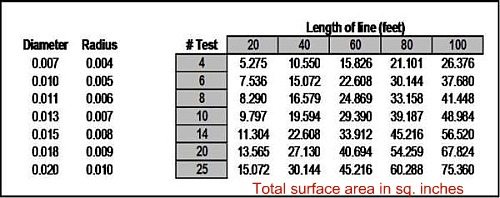 Bass fishing can be a real drag.
Bass fishing can be a real drag.
I’m not talking “bummer-like” drag – bass fishing is way too cool for that.Â
Nor am IÂ speaking to the drag on your reel. It’s important, it’s a drag, but no cigar.
Here’s a hint: The “drag” I am referring to happens to some degree every time you make a cast and reel in a bait, or set the hook. Chances are you’ve never seen it mentioned before in an article, and haven’t considered it when fishing.
Give up yet?
I’m talking about “drag” as in a physics lesson. Drag is a mechanical force generated by a solid object moving through a fluid – specifically in this instance, your line moving through the water. You make a really long cast with a crankbait, Rat-L-Trap or structure spoon, you’re having to deal with drag to some degree. You get bit on the drop of a lengthy cast with a worm or jig and again, drag probably comes into play on the hookset.
Here’s the deal. All line has a certain diameter, thereby taking up a certain amount of space in the water. The thicker the line, the more space it takes up. Now lets add in another dimension, the length of line you have in the water at any given moment during a cast or retrieve. The more line in the water, the more surface area at play. See the table above for the approximate amount of line surface area in the water at any given length or diameter. That increased surface area increases drag, making it harder to move your line and bait.
Here’s an example everyone is probably familar with? Chances are you’ve done the trick with undoing line twist in your spinning outfits by letting out a bunch of line behind you as you slowly troll along. The more line you let out, the more drag on the system. The faster you move the boat, the more the drag increases. Let out enough line or speed up enough and you end up with a pretty substantial bend in your rod, and a little effort to reel in initially, all with no bait attached - just a perfectly straight piece of line behind you trailing in the water.
Long casts are a lot like that. There was a study done many, many years ago using monofilament and cast length, measuring the amount of force that was generated on a hook set between 8 pound test and 20 pound test. At 30 foot and less, the length of a pitch or flip, the heavier line generated as much or more force on hookset than the lighter line. Beyond those distances though, at anything longer than 40 feet, more force was always generated with the lighter line. As length continued to increase, the overall amount of hookset force for both lines kept decreasing, but was always greater for the lighter (thinner) line. A hookset that generated 8-9 pounds at a 20′ length would only generate half that or less at 100 feet.
One of the main reasons given for that result was the “parabolic” effect. You make a long cast, and you don’t have a straight line pull to your bait. Instead, you usually have a big “belly” in the line. Any hookset has to overcome that, and with thinner line that cuts through the water better and has less overall surface area to be affected by drag, the more success with transmitting energy to the hook.
Now days we have a wider array of lines that help to overcome some of these obstacles. Think fluorocarbon with it’s higher density and better sinking ability, or superlines and their lack of stretch and super thin diameters for a given pound test. Still, you can’t completely overcome the effect of drag on a line, so you might want to consider the available line options to anglers now days based upon what type presentation and how long a cast you might be regularly making.


























Chad Keogh
June 6, 2011 at 8:16 am
It’s always a factor even if you don’t think about it quite like the chart above. When throwing tube jigs near steep structure for smallies, I factor in drop speed. Which, of course, is affected somewhat by line diameter.
The other drag, other than the one controling spool slip, is air drag on the cast… time for another chart!
admin (mostly Jay)
June 7, 2011 at 1:35 pm
Wow. Figured there was some drag, not that much. Maybe this is why pros love the sinking property of fluorocarbon so much?